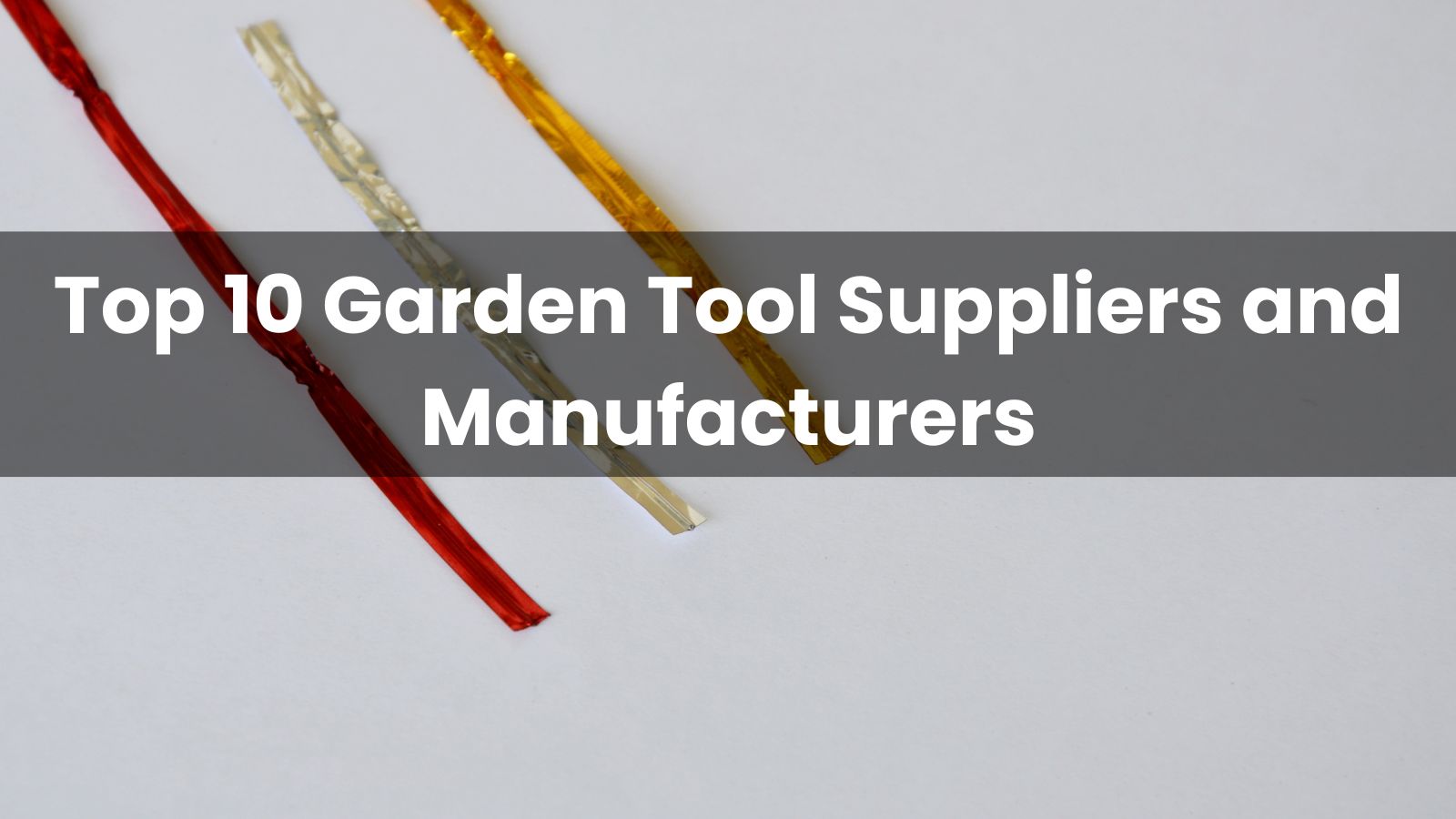
Welcome to the Ultimate Guide to Green Plant Stakes, your comprehensive resource for understanding and implementing effective staking practices in your garden. Whether you're a seasoned gardener or just starting out, our guide, packed with insights and tips, is designed to help you navigate the world of plant stakes, ensuring your green friends receive the support they need to grow strong and healthy.
In the realm of modern gardening, plant stakes play a pivotal role that cannot be understated. Whether you're a seasoned green thumb or just starting out, you've likely encountered the need for some form of support for your beloved plants. But what exactly are plant stakes, and why are they so crucial for today's gardeners?
At their core, plant stakes, which can also be referred to as support stakes for outdoor plants, are designed to provide stability and direction for the growth of your plants. They are not just mere accessories but essential tools that assist in the healthy development of both flowering beauties and fruitful harvests. In environments where winds can be harsh and soils loose, stakes act as steadfast guardians ensuring that your plants grow upright and strong.
Moreover, for climbing varieties such as tomatoes, cucumbers, and ivies, stakes are indispensable. They serve as the backbone for these plants, offering a structure to ascend upon. This is where specialty stakes, like the moss pole for climbing plants, come into play, providing not just support but also mimicking the natural climbing environment these plants would seek out in the wild.
The use of stakes in gardening is not a new concept; however, the innovation and variety available in the market today are truly modern phenomena. From eco-friendly options to designer variants that blend seamlessly into your garden's aesthetic, there's a stake for every need and every type of gardener. But the essence remains the same - to aid and encourage your plants' journey towards their fullest potential.
In summary, the role of plant stakes in modern gardening is multifaceted and indispensable. They are not only supporters but also enhancers of plant growth, contributing significantly to the structural integrity, aesthetic appeal, and overall health of your garden plants. As we move forward, we'll delve deeper into the types, uses, and benefits of various plant stakes, ensuring you're well-equipped to make the right choice for your green companions.
When we talk about green plant stakes, we're diving into a specific category of gardening aids designed to blend in with the natural aesthetics of your garden. But what makes these stakes stand out from the rest, and why should you consider incorporating them into your gardening toolkit?
Firstly, green plant stakes are typically made from materials that either naturally have a green color or are coated to achieve this hue. This design choice is intentional, aiming to ensure that the stakes are less conspicuous and maintain the natural beauty of your garden. They can be made from various materials, including plastic, metal, bamboo, or wood, each offering different benefits and levels of support.
But it's not just about aesthetics. These stakes are also functional; they provide essential support for plants, helping them grow upright and preventing damage from winds or the weight of their own blossoms and fruits. For gardeners looking to maintain an organic and unobtrusive look, green plant stakes are an ideal choice. They're particularly popular among enthusiasts of vine plants, climbing flowers, and vegetables that require support to reach their optimal growth.
In addition to supporting plant growth, these stakes can also be used as a framework for protective netting or as guides for the plant's growth direction. They are versatile tools that cater to a range of gardening needs, from structural support to creating aesthetically pleasing plant arrangements.

Delving into the world of green plant stakes, you'll discover an array of types, each designed to meet different needs and gardening scenarios. Understanding the varieties available can help you make informed decisions that best suit your plants and garden design. Let’s explore some of the most common types of green plant stakes.
Bamboo stakes are a favorite among gardeners for their natural look, durability, and eco-friendliness. They blend in well with garden surroundings and are perfect for supporting young trees, vegetables, and flowering plants. Bamboo is lightweight, easy to cut to any size, and can be used for both indoor and outdoor plants.
These stakes offer the strength of metal with a protective plastic coating, which not only makes them weather-resistant but also helps them blend into the garden setting. They are ideal for heavier or taller plants that need more robust support and can be reused for multiple seasons.
Fiberglass stakes are another sturdy option that won’t rust, rot, or splinter. They are lightweight and come in various lengths and thicknesses. Their green color helps them to remain discreet within the garden while providing the necessary support for plants.
Traditional yet effective, wooden stakes are widely used for a range of gardening tasks. While not always green in color naturally, they can be painted or treated to match the garden’s aesthetic. They are best used for supporting medium-sized plants and can add a rustic charm to any garden setting.
Specially designed for climbing plants, moss poles provide a natural and organic support system. They are usually made from a moss-covered stick that helps plants attach and climb upwards. These poles are perfect for indoor plants like philodendrons and monsteras, offering them a humid microenvironment that promotes growth.
Each type of green plant stake has its own set of benefits tailored to different plant types and garden environments. By understanding the specific needs of your plants, you can select the most appropriate stakes to ensure their healthy growth and enhance the overall beauty of your garden.
The use of plant stakes is not just a matter of garden aesthetics; it plays a critical role in the development and health of your plants. Let’s delve into the numerous advantages they offer, from bolstering plant growth to enhancing your garden's visual appeal.
One of the primary benefits of using plant stakes is to encourage plants to grow upwards. This is particularly crucial for climbing plants and vines, which need a structure to cling to as they grow. Vertical growth helps improve air circulation around the plants, reducing the risk of diseases associated with poor air flow, such as powdery mildew.
By using stakes to support plants, you help prevent stem breakage, which can occur due to wind or the weight of the plant's own fruit and flowers. This structural support is especially beneficial during stormy weather, protecting plants from being bent or broken by the elements.
For fruit-bearing plants and vegetables, staking can lead to an improved yield. Supporting plants in an upright position ensures that fruits and vegetables are less likely to come into contact with the soil, reducing the risk of rot and pest infestations. Additionally, vertical growth facilitates easier harvesting and increases exposure to sunlight, which can enhance fruit production and quality.

Beyond the practical benefits, plant stakes offer significant aesthetic advantages that can transform the look and feel of your garden.
Stakes can be used to create a sense of structure and order in your garden. They guide the growth of plants, ensuring that your garden remains tidy and well-organized. This structured approach is not only pleasing to the eye but also makes maintenance tasks easier and more efficient.
Whether you’re aiming for a modern, minimalist garden or a wild, natural look, plant stakes can be utilized to complement your garden’s theme. Green stakes, in particular, blend seamlessly with the natural environment, supporting your plants while maintaining the garden's aesthetic integrity.
Use stakes to highlight or accentuate specific plants, drawing attention to feature plants or flowers. This can create focal points in your garden, guiding the viewer’s gaze and adding visual interest.
In conclusion, the integration of plant stakes into your garden is beneficial on multiple fronts. They not only promote healthier, more robust plant growth but also contribute to a more organized and visually appealing garden space. Whether you’re a seasoned gardener or just starting out, the addition of stakes is a simple yet effective way to enhance both the functionality and beauty of your gardening endeavors.
In the vast world of garden support, traditional stakes stand out for their simplicity and effectiveness. Let's take a closer look at two of the most classic materials used in plant staking: wood and metal. Each offers unique benefits and can be the perfect choice depending on your gardening needs and preferences.
Wooden stakes are as timeless as gardening itself. Their natural appearance allows them to blend seamlessly into the garden, enhancing its organic aesthetic. But the appeal of wooden stakes goes beyond looks. They are also highly versatile, easily cut to any desired length, and can be used with a wide variety of plants, from tomatoes to young trees.
However, it's important to note that while wooden stakes are eco-friendly and cost-effective, they may not last as long as other materials. They can be prone to rot, especially when in constant contact with moist soil, and may need to be replaced every few seasons. To extend their life, look for treated wood or consider painting or sealing them yourself.
For those seeking a more durable option, metal stakes are a strong contender. Typically made from steel or aluminum, metal stakes can withstand harsh weather conditions and resist the wear and tear of outdoor elements. Their sturdiness provides excellent support for heavier plants or those exposed to strong winds.
Metal stakes often come with a rust-resistant coating, which extends their lifespan and maintains their appearance. They can also be found in green, blending with the garden foliage, or in natural metal colors for a more industrial look. While they may be more of an investment initially, their longevity and strength can make them a cost-effective choice in the long run.

As the world moves towards more sustainable and personalized gardening solutions, innovative stakes are gaining popularity. These include biodegradable and decorative options, which not only support plants but also cater to eco-conscious gardeners and those looking to add a touch of beauty to their outdoor spaces.
Biodegradable stakes are a game-changer for those looking to reduce their environmental footprint. Made from natural materials like bamboo, jute, or other compostable compounds, these stakes naturally break down in the soil over time, enriching it without leaving harmful residues.
These eco-friendly options are ideal for annual plants or temporary gardening projects. They offer sufficient support during the growing season and can be left in the ground to decompose, thereby minimizing waste and eliminating the need for seasonal clean-up. However, while biodegradable stakes are excellent for light support and environmental sustainability, they may not be suitable for heavier or perennial plants requiring long-term support.
Decorative stakes take the functionality of traditional staking and blend it with artistic designs to enhance the aesthetic appeal of gardens. Available in a variety of materials, shapes, and colors, these stakes can complement the theme of any garden or serve as a focal point.
From whimsical figures to elegant floral patterns, decorative stakes are not only practical but also a way to express personal style in the garden. They can be used with both flowering plants and foliage, adding charm and character while providing necessary support. While they might come at a higher price point than standard stakes, their dual purpose as garden art and plant support can justify the investment for those looking to enhance the visual appeal of their outdoor spaces.
In conclusion, whether your gardening priorities lie in sustainability or aesthetics, innovative stakes like biodegradable and decorative options provide exciting possibilities. They allow gardeners to support their plants while also aligning with their environmental values or design preferences, making gardening an even more rewarding experience.
Choosing the appropriate stakes for your plants is crucial for their health and growth. Whether you're tending to indoor plants, flowering beauties, or fruit-bearing vegetables, the right support can make all the difference. Let's dive into how to select the best stakes based on plant type, material, and durability.
Flowering plants often require stakes that offer support without overshadowing their beauty. Slim bamboo or elegant metal stakes are excellent choices as they provide strength while blending with the natural aesthetic. For taller species or those with heavy blooms, sturdy wooden or thicker bamboo stakes can offer the necessary support without detracting from the plant's appearance.
Vegetable and fruit plants, such as tomatoes, cucumbers, and beans, need robust support systems. Metal stakes, cages, or sturdy wooden stakes are best suited for these types of plants. They can support the weight of the fruits and allow for easy access during harvesting. Remember, the choice between stakes and cages often depends on the plant’s growth habit and the gardener's preference.
Indoor plants, especially climbing varieties like philodendrons or ivies, benefit from slender, discreet stakes that support growth without overwhelming the plant. Moss poles or small wooden or bamboo stakes work well, offering support while maintaining indoor aesthetic appeal.
When selecting stakes based on material, consider both the longevity and the environmental impact. Metal and certain treated woods offer long-term durability but may not be as eco-friendly as bamboo or untreated wooden stakes. Biodegradable options, while less durable, offer a sustainable choice for temporary or seasonal use.
The climate and outdoor conditions play a significant role in the choice of stakes. For areas prone to heavy rains or strong winds, metal or heavyweight wooden stakes are preferable for their strength and stability. In contrast, in milder conditions or for indoor use, lighter materials like bamboo or plastic-coated metal can be sufficient.

Successfully supporting your plants with green stakes requires more than just sticking them into the ground. Proper installation techniques, maintaining the right depth and angle, and securing plants without causing damage are crucial steps to ensure the healthy growth and aesthetic appeal of your garden.
When installing green plant stakes, start by choosing the correct length and thickness for your plant's needs. Gently insert the stake into the soil close to the plant, being careful not to damage the root system. For best results, install stakes when the plant is young to avoid later root damage and to allow the plant to grow accustomed to the support structure.
The depth and angle at which you stake your plant can significantly impact its effectiveness. A general rule of thumb is to insert one-third of the stake into the ground to ensure stability. For taller plants, a deeper depth may be necessary. The stake should be positioned vertically for straight growth or slightly angled for climbing plants to encourage upward growth.
To secure the plant to the stake, use soft materials like garden twine, strips of cloth, or special plant ties. Avoid tying the plant too tightly, as this can restrict growth and damage the stem. Instead, tie a loose loop around the plant and the stake to provide support while allowing for natural movement and growth.
Regular maintenance is essential to ensure your stakes continue to provide the necessary support as your plants grow. Perform routine checks to adjust ties, reposition stakes as needed, and add additional stakes for new growth. Keep an eye out for signs of wear or damage to the stakes themselves, especially after extreme weather conditions.
Make routine checks part of your regular gardening schedule. Adjust the ties and stakes as the plant grows and develops to ensure they continue to provide the right level of support. This is particularly important during rapid growth phases and after heavy rain or wind.
At the end of the growing season, clean your stakes with soapy water and allow them to dry completely before storing. This helps prevent disease and pest transfer between seasons. Store them in a dry, sheltered place to prevent rust and decay, ensuring they are ready for use in the next planting season.
To elevate your garden's functionality and aesthetic, advanced staking strategies can be employed. These methods not only provide support but also enhance the overall design and productivity of your garden space.
In denser gardens, layered staking can create levels of support that accommodate various plant heights and types. This approach maximizes space and sunlight exposure, leading to healthier plants and more abundant yields. Implementing different heights and types of stakes can create a tiered garden effect that is as beautiful as it is functional.
Climbing plants like ivy, roses, or beans require specialized support to thrive. Constructing a framework of green plant stakes, either individually or intertwined, can guide and support vertical growth. This not only aids the plant's health but also creates stunning green walls and archways that can transform the look of your garden.
Stakes can be effectively combined with other garden tools for enhanced support and functionality. For instance, attaching stakes to garden hoops or frames can provide additional support for heavier plants or those susceptible to wind damage. This combination approach can be tailored to the specific needs of your garden and plants.
Pairing green plant stakes with trellises and netting can create comprehensive support systems for both climbing and vining plants. This synergy allows for better air circulation, increased sunlight exposure, and easier harvesting. It also adds a layer of visual interest to your garden, making it a focal point of your outdoor space.
Incorporating green plant stakes into your garden's irrigation system can streamline watering processes and ensure plants receive optimal hydration. By positioning stakes near water sources or using them to support soaker hoses or drip lines, you can create an efficient watering system that reduces waste and ensures that water reaches the root zones of your plants.
Embracing eco-friendly and sustainable practices in gardening not only benefits the environment but also enhances the health and vitality of your garden. Making informed, green choices can lead to a more sustainable gardening experience, from the materials you select to the way you manage garden waste.
Adopting eco-friendly practices starts with making conscious choices. Opt for natural and organic fertilizers, pesticides, and soil amendments to reduce chemical usage. Embrace companion planting to naturally repel pests and improve soil health, reducing the need for synthetic inputs.
When it comes to staking, choose materials that are sustainable and biodegradable, such as bamboo, wood, or recycled metal. Avoid plastic stakes or those treated with harmful chemicals. Sustainable materials not only last longer but also reduce your carbon footprint.
Instead of disposing of old stakes, consider recycling or upcycling them. Wooden stakes can be repurposed into markers for new plants, while metal stakes can be reshaped or welded into new forms. This approach minimizes waste and promotes a cycle of reuse.
Every green choice you make has a positive impact on the environment. By reducing the use of non-renewable resources and minimizing waste, you contribute to a healthier ecosystem. Sustainable gardening practices help conserve water, improve soil health, and reduce greenhouse gas emissions.
Minimize plastic usage by opting for natural materials and reusing containers and gardening tools. Invest in high-quality, long-lasting equipment to reduce the need for frequent replacements and plastic waste.
Select plant species that are native to your area or known to thrive in your local climate. This not only reduces the need for water and chemical treatments but also supports local wildlife, including pollinators like bees and butterflies. Diverse plantings contribute to a balanced ecosystem, promoting biodiversity and resilience in your garden.
Even the most seasoned gardeners can run into issues when it comes to staking plants. Recognizing common staking errors and knowing how to address them can make all the difference in the health and appearance of your garden.
One frequent mistake is over-staking, which can lead to restricted plant growth and development. Plants need room to move in the breeze to develop strong stems. Another common issue is incorrect stake placement or selection, which can result in inadequate support or even damage to the plant.
Avoid over-staking by allowing some movement and ensuring ties are not too tight. This promotes stronger root and stem development. Regularly check and adjust the tightness of ties to prevent cutting into growing stems.
Ensure stakes are placed on the side of prevailing winds to provide proper support. Choose the right size and type of stake for your plant to prevent toppling and promote healthy growth.
If you notice a plant is not supported correctly, don’t hesitate to adjust the stakes. As plants grow, they may need higher or more robust stakes. Regularly inspect and adjust your staking approach to accommodate plant growth.
Monitor plant growth throughout the season and adjust stakes as needed. This may mean adding higher stakes or additional supports for top-heavy plants or those that have outgrown their initial stakes.
Weather can pose significant challenges to staked plants. After heavy rain or strong winds, check your plants and stakes to ensure they are still providing adequate support. Reinforce or replace stakes as necessary to combat the effects of weather and keep your plants standing tall.
In conclusion, whether you are cultivating a sprawling outdoor garden or nurturing a cozy indoor green space, the right plant stakes make all the difference. By implementing the strategies and solutions detailed in this guide, you're setting your plants up for success. For gardeners seeking top-quality, sustainable options, look no further than Linkwin, the leading manufacturer of Green Plant Stakes. Visit our global website at www.agriculturaltool.com to explore our range of products designed with your garden's health and the environment in mind. Embrace the strength and beauty of Linkwin Green Plant Stakes and witness your garden transform into a thriving, vibrant ecosystem.











We use cookies to make the website work, to provide advanced features, social media and traffic analysis, and we use analytics and third-party advertising cookies. If you choose to click "Deny All", you will retain the default setting of not allowing the use of cookies or other tracking tools other than technical tools.

